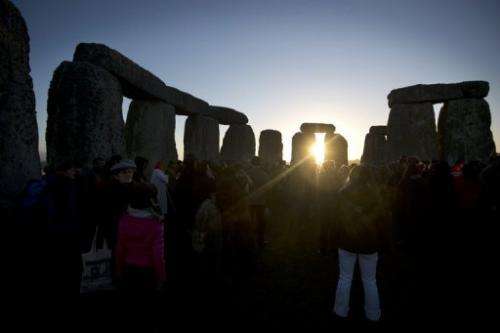Stonehenge was ancient rave spot, new theory says

British researchers on Saturday unveiled a new theory for the origins of Stonehenge, saying the ancient stone circle was originally a graveyard and venue for mass celebrations.
The findings would overturn the long-held belief that Stonehenge on Salisbury Plain in southwestern England was created as a Stone Age astronomical calendar or observatory.
A team led by Professor Mike Parker Pearson of University College London said Stonehenge, a UNESCO World Heritage site, is both older and had a different function than previously thought.
"In many ways our findings are rewriting the established story of Stonehenge," Parker Pearson said.
The archaeologists carried out a decade of research which included excavations, laboratory work and the analysis of 63 sets of ancient human remains.
They said the original Stonehenge appeared to have been a graveyard for elite families built around 3000 BC, 500 years earlier than the site that is famous today.
The remains of many cremated bodies were marked by the bluestones of Stonehenge, Pearson said.
Further analysis of cattle teeth from 80,000 animal bones excavated from the site also suggest that around 2500 BC, Stonehenge was the site of vast communal feasts.
These would have been attended by up to one tenth of the British population at one time in what Parker Pearson said resembled "Glastonbury festival and a motorway building scheme at the same time."
It seemed that ancient people travelled to celebrate the winter and summer solstices but also to build the monument, he said.
"Stonehenge was a monument that brought ancient Britain together," he said.
"What we've found is that people came with their animals to feast at Stonehenge from all corners of Britain—as far afield as Scotland."
He said it appeared to be the "only time in prehistory that the people of Britain were unified."
Unesco describes Stonehenge as the most architecturally sophisticated prehistoric stone circle in the world.
But archaeologists have long argued about its importance to the people who built it, ranging from a place of astronomy to one of human sacrifice.
The researchers said their findings also gave a clue to why the monument stopped being used—another mystery that has baffled archaeologists.
The earlier timeline they propose suggests that Stonehenge was built before the arrival of the "Beaker people" who brought with them a less centralised political culture.
(c) 2013 AFP


















